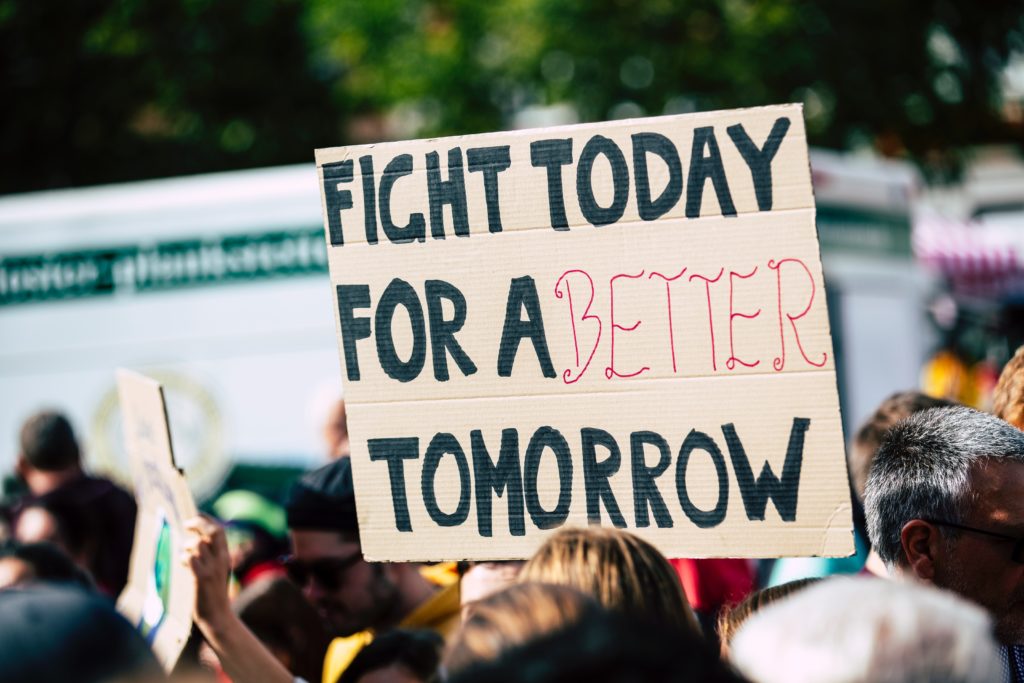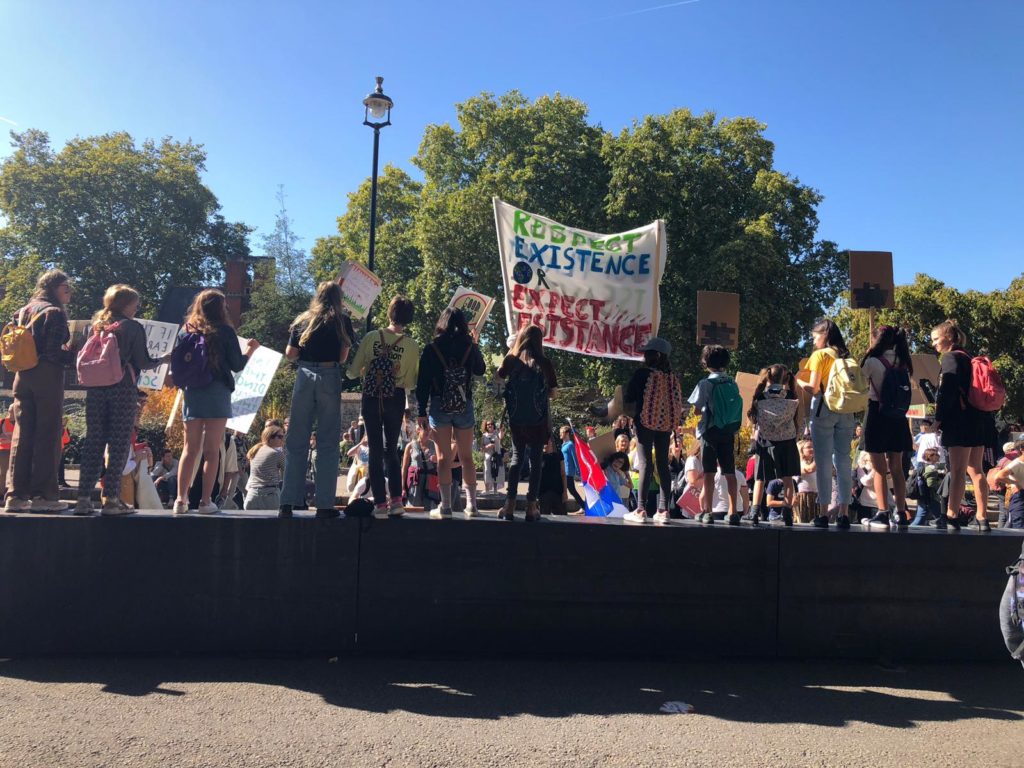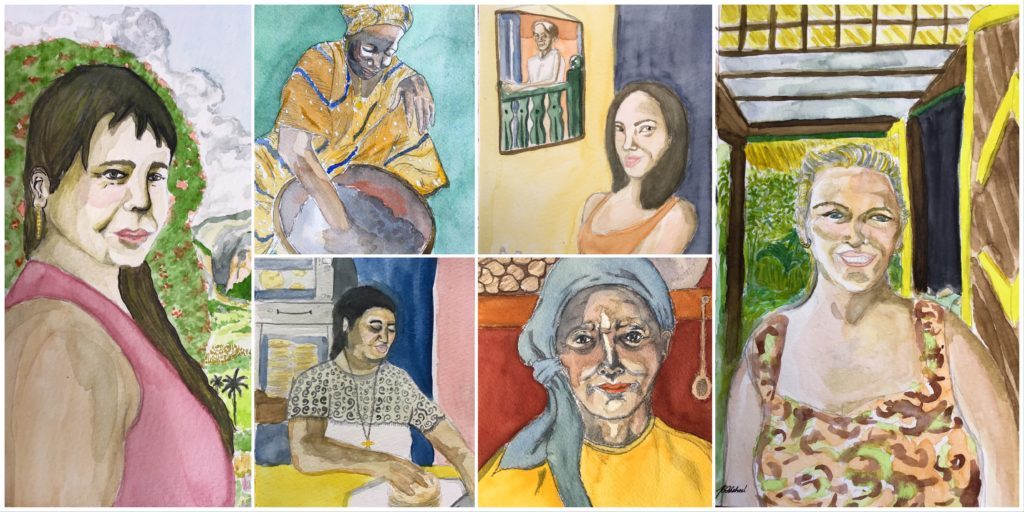The role of climate finance in climate justice
24 September 2019, Alexandra Milano, Category: All insights, News, Tags: Accredited entities, Adaptation Fund, climate finance, Climate justice, gcf, gender, Global Environment Facility, Green Climate Fund, NDAs, PPF

Consultant Alexandra Milano discusses the links between climate justice and climate finance in her upcoming series. Read part one below now.
Climate change discussions routinely focus on switching to renewable energy or emphasise energy efficiency. While these approaches are essential to meeting the 1.5 °C goal set out in the Paris Agreement, they miss a larger point. Climate change is an inter-sectional issue, one that coincides with economic, gender and racial inequalities. Climate change has a human face—and very real consequences for society’s most vulnerable people.
What is climate justice?
In response to this reality, climate movements all over the world are adopting a people centered, rights-based approach. Climate justice recognises the vulnerability of marginalised groups including low income communities, communities of colour, women and girls, due to historic inequality. It seeks to protect their rights and ensure that climate change is addressed in an just way, meaning that the resulting burdens are shared equitably. High income countries industrialised more rapidly thanks to the unabated use of fossil fuels. On the other hand, low income countries have not developed along the same trajectory and yet disproportionately bear the most severe effects of climate change.
To help correct this imbalance, the Mary Robinson Foundation outlines several “Principles for Climate Justice” [1]:
- Respect and protect human rights
- Support the right to development
- Share benefits and burdens equitably
- Ensure that decisions on climate change are participatory, transparent and accountable
- Highlight gender equality and equity
- Harness the transformative power of education for climate stewardship
- Use effective partnerships to secure climate justice
These tenets have been integrated into many current climate action movements. They form the basis of grassroots movements around the world as more and more people demand that their voices be heard. Climate justice has inspired citizens and organisations alike to take legal action against countries and private companies. The movement is even taking hold in the US Congress, where Senator Kamala Harris and Representative Alexandria Ocasio-Cortes introduced legislation designed to protect and amplify the voices of vulnerable communities.

A photo from the Global Climate Strike in Westminster, 20 September 2019
What’s the link to climate finance?
Climate finance offers another vehicle for achieving climate justice. High income countries with fossil fuel driven economies support the major UNFCCC climate funds. Money then flows from these funds (Green Climate Fund, Adaptation Fund, Global Environment Facility, NAMA Facility, etc) to more vulnerable low income countries. In order to access these funds, applying entities must demonstrate that they have given due consideration to a number of factors, several of which are considered key tenets of climate justice.
Equitable burden sharing is a predominant feature in both climate justice and climate finance. Adaptation finance in particular is often viewed as a form of distributive justice. High-emitting, high income countries support resilience-building activities in low income countries that are expected to feel the most extreme effects of climate change, reducing their vulnerability to climate risks [2]. At its core, adaptation finance provides targeted assistance to communities for building resilience. Finance for adaptation has been found to enable communities to respond to a greater number of climate risks and enhance both the agency and security of community members [3]. This type of support is in line with what is known as the Polluter Pays Principle, which stipulates that those parties who are responsible for pollution (including emissions) must be responsible for addressing them.
Another climate justice principle most apparent in climate finance is participatory, transparent and accountable decision-making. This often takes the form of country ownership. Country ownership is a priority within climate finance and aims to bolster national involvement in decision-making processes. There is an expectation that applications for climate funds are in accordance with national priorities such as National Adaptation Plans and other strategic documents. The Green Climate Fund (GCF), for example, has a number of mechanisms in place to enhance country ownership. These include support to National Designated Authorities via country readiness and support to Accredited Entities via the Project Preparation Facility (PPF). The PPF also supports Direct Access Entities with limited project development capacity [5].
Gender also is a central focus of both. Climate change affects men and women differently, and women are disproportionately impacted by it. Women also face obstacles to participation, both in the decision-making process and in the implementation and planning of responses to climate change. Climate justice seeks to increase their meaningful participation and strives for equity. These aims are codified in the policies of several climate funds. For example, the Adaptation Fund’s Gender Policy and Action Plan ensures that “equal rights, responsibilities, and opportunities for women and men, equal consideration of their respective interests, vulnerabilities, needs and priorities are considered during the project cycle. It also promotes women’s leadership roles in the decision-making process in planning how to adapt to climate change.” [6]
Concluding thoughts
There are numerous links to climate justice within climate finance—that much is clear. However, the efficacy of seeking justice through existing avenues and mechanisms (such as those I’ve mentioned above) merits additional consideration. How accessible is adaptation finance to local communities? Is promoting country ownership enough to ensure participation, transparency and accountability, or should ownership be devolved even further, to local communities? Are the gender provisions made by the climate funds doing enough to promote gender equality? In my next posts, I’ll dive deeper into the overlap and discuss whether the above mechanisms are sufficient for achieving climate justice.
Bibliography
[1] The Mary Robinson Foundation. Climate Justice- Principles of Climate Justice. Available at: https://www.mrfcj.org/principles-of-climate-justice/
[2] Sarah Colenbrander, David Dodman and Diana Mitlin, “Using climate finance to advance climate justice: the politics and practice of channelling resources to the local level,” Climate Policy, 18(7):1-14, 2017. Available at: http://bit.ly/2n5FKlU
[3] Barrett/ Global Environmental Change 23 (2013) 1819–1829
[4] Dellink et al, “Sharing the burden of adaptation financing: Translating ethical principles into practical policy,” Institute for Environment Studies, Vrije Universiteit, 2008. Available at: https://www.pbl.nl/sites/default/files/cms/publicaties/500114010.pdf
[5] For more information on country ownership, see our latest GCF Insight: https://staging.ecoltdgroup.com/gcf-insight-12-country-ownership/
[6] The Adaptation Fund, “Advancing Gender Equality and the Empowerment of Women and Girls.” Available at: https://www.adaptation-fund.org/wp-content/uploads/2018/06/AF-Gender-Environment-06.2018-WEB.pdf
Let’s talk
If this is something you’re interested in or would like to learn more about, please don’t hesitate to get in touch with us at amy@ecoltdgroup.com and you can learn more about what E Co. does here.
Did you find this article useful? Yes 🙂 No 🙁

Join the conversation by posting a comment below. You can either use your social account, by clicking on the corresponding icons or simply fill in the form below. All comments are moderated.